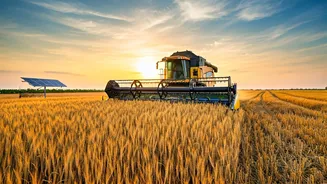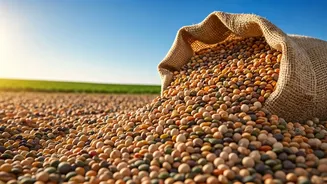Understanding Atmanirbharta
The journey towards 'Atmanirbharta' for Indian farms entails becoming self-sufficient, relying on local resources, and reducing dependence on external
factors. This approach emphasizes optimizing existing resources within the farm, making it less vulnerable to market fluctuations and external supply chains. Central to this concept is the adoption of sustainable farming methods that enhance soil health and conserve water, ensuring the long-term viability of agricultural practices. Furthermore, Atmanirbharta promotes empowering farmers by equipping them with the knowledge and tools needed to control their operations and enhance their livelihoods, thereby fostering resilience within the agricultural sector. Embracing indigenous knowledge and integrating traditional practices into modern farming techniques is also crucial for building a sustainable agricultural system.
Resource Management Strategies
Effective resource management is a key aspect of making Indian farms self-reliant. Farmers must adopt integrated water management techniques, including rainwater harvesting, efficient irrigation methods, and water conservation practices. Implementing these methods can help conserve water resources and reduce the impact of droughts on crop yields. Another crucial area is soil health, where farmers must prioritize practices such as composting, crop rotation, and the use of organic fertilizers to improve soil fertility and reduce the need for synthetic inputs. Moreover, optimizing land use through diversified cropping systems and intercropping can enhance productivity and reduce risk. Finally, farmers can boost their resourcefulness by adopting renewable energy sources, like solar power, to reduce energy costs and environmental impact, thereby moving closer towards self-sufficiency.
Local Input Utilization
To bolster self-reliance, Indian farms should lean heavily on local resources. Farmers can significantly cut costs and environmental impact by producing their own fertilizers through composting and vermicomposting, using readily available organic materials. Similarly, by using on-farm seed production and preservation techniques, farmers can reduce their reliance on external seed suppliers. This not only cuts down expenses but also promotes the use of locally adapted varieties, which are better suited to local climatic conditions. Developing a circular economy within the farm is another important step. This could involve using crop residues for animal feed or as a source of energy through biogas production. By maximizing the use of local inputs, farms can reduce their reliance on outside vendors and cultivate a more resilient, self-sufficient system.
Technology and Innovation
Leveraging technology and innovation is critical for enhancing farm self-reliance in India. Precision farming techniques, which involve using GPS, sensors, and data analytics, can help farmers optimize their use of inputs such as water, fertilizers, and pesticides. This approach reduces waste and boosts yields, leading to greater efficiency and profitability. Implementing digital tools and platforms allows farmers to access timely information on weather patterns, market prices, and best practices. These tools enable better-informed decision-making. Furthermore, adopting modern agricultural machinery, like automated irrigation systems and harvesting equipment, can improve efficiency and reduce labor costs. It's crucial to support research and development in agriculture to promote the development of new, locally relevant technologies that empower Indian farmers.
Market Linkages and Value Addition
Establishing robust market linkages and value addition strategies are important for making Indian farms 'Atmanirbhar.' Farmers can gain better control over their incomes and reduce their vulnerability to market fluctuations by directly connecting with consumers and retailers. This can involve setting up farmer producer organizations (FPOs) and forming cooperatives to improve their bargaining power and access to markets. Value addition is also important. This involves processing agricultural products, such as turning fruits and vegetables into jams, pickles, or juices. Value addition not only increases the income potential but also minimizes post-harvest losses and diversifies income streams. Support for farmers to access these processes through training, financial assistance, and infrastructure improvements is vital.
Policy and Support
Government policies and support play a crucial role in promoting self-reliant farming practices in India. The government can provide financial incentives, such as subsidies and credit facilities, to encourage farmers to adopt sustainable and innovative farming techniques. Investments in rural infrastructure, including irrigation systems, storage facilities, and transportation networks, are essential to support farmers' efforts to increase productivity and get their goods to market. It's important to develop and promote farmer-friendly policies, such as simplified regulations, access to information, and capacity-building programs, to empower farmers with the resources and knowledge needed to succeed. Furthermore, the government can play a critical role in promoting research and development initiatives, thereby fostering innovation and developing tailored solutions for Indian agriculture.















